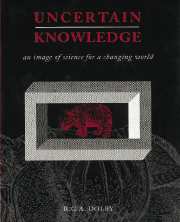Book contents
- Frontmatter
- Contents
- Preface
- 1 Introduction
- Part I The nature of science
- Part II Does science have distinctive qualities?
- 7 What, if anything, is distinctive about science?
- 8 How is good science to be distinguished from bad science?
- 9 A theory of the pathologies of science
- Part III Changing science in a changing world?
- Appendix: Summary of cases of marginal and disputed science
- References
- Index
8 - How is good science to be distinguished from bad science?
Published online by Cambridge University Press: 28 January 2010
- Frontmatter
- Contents
- Preface
- 1 Introduction
- Part I The nature of science
- Part II Does science have distinctive qualities?
- 7 What, if anything, is distinctive about science?
- 8 How is good science to be distinguished from bad science?
- 9 A theory of the pathologies of science
- Part III Changing science in a changing world?
- Appendix: Summary of cases of marginal and disputed science
- References
- Index
Summary
In this chapter, I will consider knowledge-producing activities which are claimed by their proponents to be scientific. The best practices are properly scientific, the worst are pseudo-scientific; in between lies a continuum from good science to bad science.
Our immediate judgements of pseudo-science are very often prejudgements, coming before careful open and rational deliberation. To turn the prejudgements into explicitly reasoned judgements involves identifying and scrutinising many hidden issues. Consider, for example, your own thinking in evaluating an area of popular belief which you are not inclined to take seriously. It might be the idea that putting a pyramid over a razor blade will keep it sharp indefinitely (pyramidology*), or that the Bermuda Triangle* poses a genuine danger to Caribbean shipping, or that psychic surgery really does involve removal of internal organic material, leaving the skin unbroken. If you dismiss any such case with a chuckle, rather than after careful investigation, you are presumably relying on the feeling that the very idea is ridiculous; you are, perhaps, fitting in with the conventional establishment attitude, which is to scorn such things. Your attitudes are not the result of your own considered thought, and it may be quite difficult to turn them into explicitly reasoned conclusions.
If our distinction between good science and inferior or pseudo-science is not just to be a label for value judgements with no explicit rational basis, we should identify criteria which can be applied to any case without prejudgement to help us come to clear conclusions. The criteria offered in this chapter will be developed further in the next chapter, which offers a theory of the pathologies of science.
- Type
- Chapter
- Information
- Uncertain KnowledgeAn Image of Science for a Changing World, pp. 190 - 226Publisher: Cambridge University PressPrint publication year: 1996



